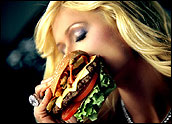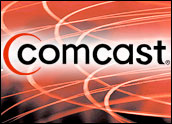
With the help of a racy ad featuring Paris Hilton and outcry from watchdog groups such as the Parents Television Council (PTC), Carl’s Jr. has scored a hit so big it just may be hotter than the spicy burger the ubiquitous heiress so suggestively eats in the spot.
Along with the 30-second commercial, which has been airing in major media markets for about a week, the fast food joint’s owner, CKE Restaurants, on Monday launched www.spicyparis.com. The Web site features a minute-long version of the ad, in which Hilton, wearing a bikini, cavorts with a garden hose, soaps up a Bentley and then takes a bite of the burger.
The Real Problem
While the ad garnered complaints from some, which the company quickly dismissed, the real problem CKE had was SpicyParis.com downtime. All the publicity had done just what the company wanted, it drew traffic to the Web site — more traffic than the company was prepared to handle.
The company admitted in a press release that the site was unequipped to handle the surge in Web surfers trying to watch the ad. The servers crashed, taking the site down for about four hours. Carl’s Jr. said the site is now hosted on more robust servers.
“It was a mixed blessing,” Brad Haley, executive vice president of marketing for Carl’s Jr., said in the statement. “We wanted to create a Paris Hilton site that would attract visitors, and we certainly achieved that objective. Unfortunately, we just weren’t prepared for the influx of traffic, and disappointed a number of visitors. It turned out that Paris was too hot for our servers.”
No Downtime Is Better
Although Carl’s Jr. may be able to turn even this downtime into a plus for its campaign, it’s a good bet that the company would much rather have had the site stay up.
The explosion of streaming media and rich content — such as 60-second TV commercials — increasingly strain bandwidth. But how could Carl’s Jr. have predicted that kind of traffic on the first day the site was up?
The key is not in predicting the amount of traffic, but in having a plan that can accommodate a spike such as the one SpicyParis.com experienced.
“The capacity side is critically important to folks who want to be successful on the Internet,” Bob Hammond, CTO of Mirror Image Internet, told the E-Commerce Times. “IT’s crucially important not just to worry about content itself, but the type of customer, how many customers and how quickly they will try to access the site.”
Delivering Content
Mirror Image Internet is a content delivery network (CDN) provider that dishes up all or parts of a Web site, depending on what its customer wants. CDNs store content and deliver it to Web surfers from a closer location than the source. This reduces delays and outages that happen because of network congestion.
Often, the problem is not as dramatic as a complete crash.
“Downtime and slow-loading pages cost e-tailers US$877 million between Thanksgiving and December 26, 2004, and probably cost hundreds of millions more during the rest of the year. The majority of the revenue impact comes not from Web site outages but from the prevalence of slow Web pages and the impatience of Web customers in a broadband world,” wrote Tom Kuegler, co-founder of TargetFirst, a contextual ad network that concentrates on ROI delivery, in a paper titled, “The Billion-Dollar Question: The Impact of Web Site Performance on E-Commerce.”
“If customers become frustrated with a Web site’s performance and leave without completing a transaction, the affect is the same as if the site went dark — the e-tailer loses revenues and customers,” Kuegler wrote.
Insurance Against Spikes
What Mirror Image and other CDNs, such as Akamai and Factiva, do is take the guesswork out of deciding how much bandwidth an e-commerce or other enterprise Web site needs and bear the brunt of spikes such as the one Carl’s Jr. experienced.
“If a ton of people come to the site, good for you, but the network would take care of it,” Hammond said about his company’s service, for which pricing is based on use.
Hammond said that often sites don’t crash or slow down, but start refusing new users. In a world where a surfer’s patience for page-loading lasts about four seconds, the affects of being refused access to a site can be costly. The bottom line is that slowdowns or crashes, Paris Hilton notwithstanding, are bad for the bottom line.

















































Social Media
See all Social Media